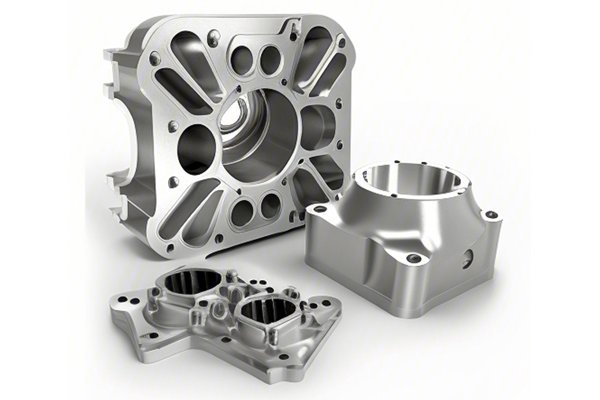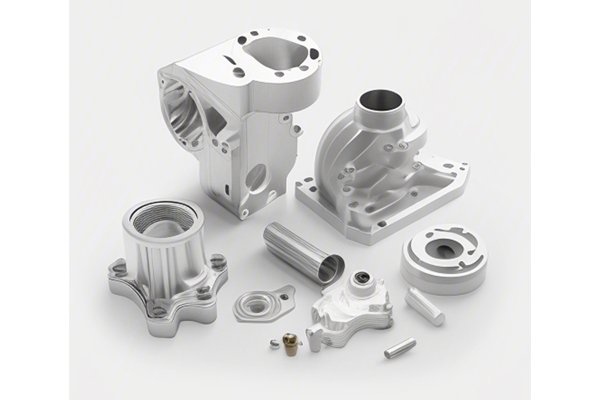Have you ever marveled at the precision of the parts that make our everyday gadgets work? From the intricate mechanisms inside your smartphone to the smooth, barely noticeable components of modern appliances, the secret often lies in machined plastic components. You might be wondering, what exactly are CNC plastic components, and why should you care? Well, strap in, because we’re about to take a deep dive into the world of CNC plastics that will have you seeing these materials in a whole new light!
Understanding CNC Machining: What’s the Buzz?
CNC, or Computer Numerical Control, is an automated process that involves cutting, grinding, and shaping materials into specific designs and dimensions. Think of CNC as a highly skilled artist, but instead of a paintbrush, it uses tools and machines to carve out precise designs. So, why is CNC prowess so crucial in today’s manufacturing landscape?
Imagine a world where every component fits perfectly, operates efficiently, and lasts as long as possible. Well, that’s the magic of CNC machining, particularly when it comes to plastic components. Machined plastic components are not just about aesthetics; they play vital roles in various industries such as aerospace, automotive, and healthcare. But enough of the surface—let’s dive deeper and explore the specifics!
The Anatomy of CNC Plastic Components
Before we get our hands dirty (figuratively, of course!), let’s break down what makes up CNC plastic components. These components can be made from a variety of plastics, each chosen for its unique properties. Some of the most common materials include:
But wait, there’s more! Each one of these plastics can be manipulated into intricate parts using CNC machinery, which leads us to the next point.
How CNC Machining Works
So, how does this complex process come together? Imagine walking through a futuristic factory where robots hustle about, diligently crafting your dream components. Here’s a step-by-step breakdown of how CNC plastic machining typically operates:
Every great creation starts with a blueprint. Using CAD (Computer-Aided Design) software, engineers create detailed designs of the components. Think of it as sculpting a statue—only instead of clay, you’re designing with digital tools.
Once the design is finalized, the right material is selected. This choice depends on the component’s required strength, durability, temperature resistance, and surface finish. Selecting the right material is like choosing the right ingredients for your favorite recipe; the final dish is only as good as what goes into it!
Now that we’ve got our design and material, it’s time to program the CNC machine. The machine is “taught” to follow the design’s specifications using a G-code—a kind of language that tells the machine exactly what to do.
Here comes the exciting part: the actual machining! The CNC machine uses various tools to cut and shape the plastic according to the specifications coded earlier. It’s like a concert where each instrument plays its part to create a beautiful symphony.
After the initial machining, components often require finishing touches. This might include sanding, polishing, or coating to achieve that perfect surface finish. No one likes rough edges—just like our coffee preferences, we all crave that smooth finish!
Why Choose Machined Plastic Components?
You’re probably asking yourself: “Why should I bother with CNC plastic components?” Well, let’s unpack the benefits:
Precision and Accuracy
Imagine a surgeon performing delicate surgery—every little move matters! Similarly, CNC machining provides high levels of precision, making it the go-to choice for industries that demand tight tolerances.
Versatility
CNC machining is like the Swiss Army knife of manufacturing. It can produce a wide range of parts, from simple brackets to complex assemblies. Whether you need prototypes or high-volume production, CNC can handle it all with ease.
Efficiency
With automated processes, CNC machining enhances production efficiency. This means faster turnaround times and reduced human error. Think of it as taking the express lane on a busy highway—you get to your destination quicker without the hassle!
Cost-Effective
While the initial investment in CNC machines can be significant, the long-term savings due to reduced waste, enhanced efficiency, and lower labor costs can’t be ignored. It’s like planting a tree that bears fruit for years to come!

Applications of CNC Plastic Components
Now that we see the amazing advantages, let’s explore where CNC plastic components are used. It’s a colorful world filled with innovative applications:
In aerospace, every gram counts! CNC machined plastic components are employed in non-structural applications, reducing weight while maintaining functionality. Think of it as packing a suitcase—lighter is always better!
From dashboards to air ducts, CNC plastics play a crucial role in manufacturing parts that need to withstand heat and vibrations. It’s like having a reliable friend alongside for a long road trip!
In the healthcare realm, precision is crucial. CNC plastic components are utilized in various medical devices, ensuring they meet strict standards and regulations. It’s like a lifeguard watching over swimmers—safety and reliability are paramount!
CNC plastics offer fantastic electrical insulation properties, making them perfect for housings and components in electronic devices. Imagine your gadget has a comfy, protective case; that’s where CNC plastics steal the show!
The Future of CNC Plastic Components
As we look ahead, the future of CNC machining and plastic components is bright. With advancements in technology and materials, we can expect even greater precision, efficiency, and sustainability. Think of it as a rocket launch—advancements that will take us beyond the horizon!
Sustainability Efforts
Many companies are focusing on sustainable practices by using biodegradable plastics or recyclable materials. By harnessing these eco-friendly options, machining can contribute to a healthier planet. It’s like planting a garden that keeps on giving!
Overcoming Common Misconceptions
As insightful as this journey has been, misconceptions still exist around CNC plastics. Let’s clear the air:
Fact: Many types of CNC plastics offer exceptional strength and durability, especially when compared to traditional materials like metals.
Fact: CNC machining is versatile and suitable for both small and large production runs, including custom applications.
Tips for Choosing a CNC Plastic Component Supplier
So, you’ve decided you want to get into the world of CNC plastic components—great choice! But how do you choose the right supplier? Here are some handy tips:
Conclusion: Embracing the CNC Revolution
At this point, you may have realized that CNC plastic components are not just ordinary parts—they are integral pieces of technology that power our world. Whether it’s the lightweight acrylic of a car window or the durable nylon in a medical device, these components are the unsung heroes of modern manufacturing.
By understanding the ins and outs of CNC plastics, we can better appreciate the innovation surrounding us. So, whether you’re an industry expert or an average consumer, remember: behind every efficient, high-quality product lies an intricate world of precision engineering that continues to evolve. Their potential is limitless, and as we embrace the CNC revolution, the possibilities are endless!
Now, isn’t that fascinating? Your next gadget might just have a machined plastic component that was once a mere idea in a programmer’s code. Isn’t technology just mesmerizing?
—



